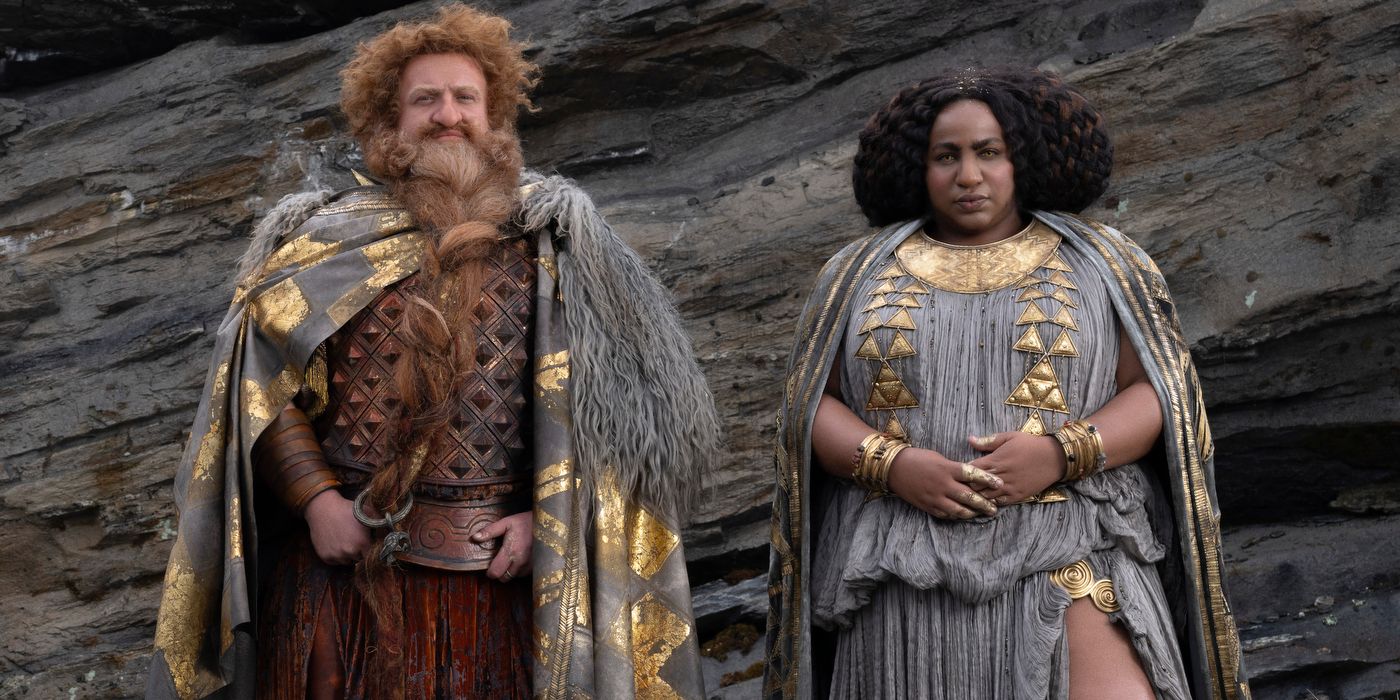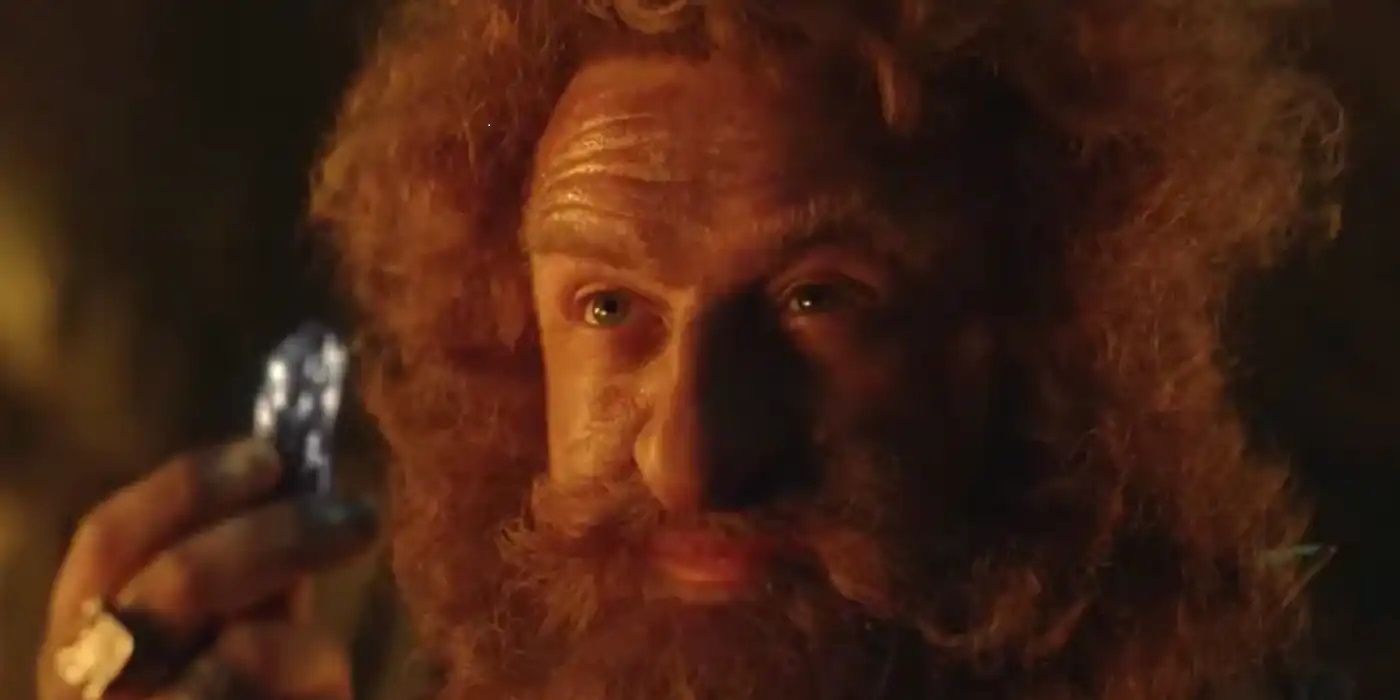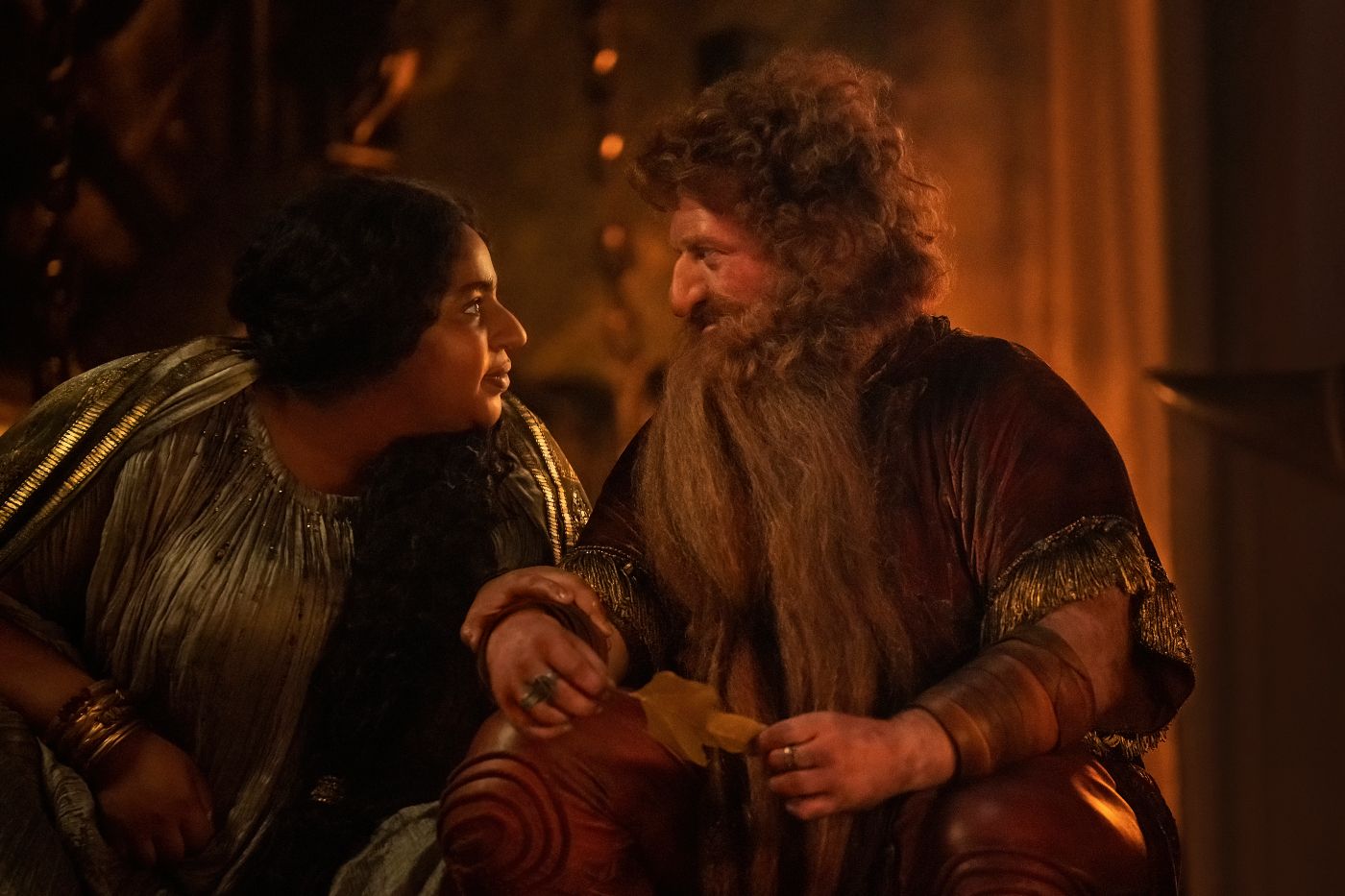Editor's note: The below contains spoilers for The Lord of the Rings: The Rings of Power.
One of the most visually stunning scenes in the opening episodes of The Lord of the Rings: The Rings of Power was the exploration of the kingdom of Khazad-dûm. The darkness of Moria seen in The Fellowship of the Ring was compelling and used to great dramatic effect, but the kingdom of the Dwarves in the Second Age is shown to be a far cry from the terrifying darkness the Fellowship passed through in the Third. The kingdom is full of light and sound, as Dwarves busy themselves around the work of mining, crafting, growing, and harvesting; all the work of an industrious society at the peak of its powers is on full display.
In addition to the remarkable imagery and design onscreen, one of the key characters in the plot has proven to be Durin IV (Owain Arthur), the heir apparent to the kingdom of Khazad-dûm, and the pivotal piece in a potential bridge between Elves and Dwarves. As you might assume from the name, he is not exactly the first Durin the world of Middle-earth has seen — though, if you ask Tolkien, he actually might be after all. More on that later. But who is Durin? And why are there so many of them? Where did they come from, and how did the line of Dwarven kings come to be? What makes them different from the other kings of the Dwarves?
When Were the Dwarves First Created?
The answer to these questions begins in the very earliest years of the First Age, and really goes back to the creation of the Dwarves themselves. They first came into being through the work of the Vala Aulë, who created the Seven Fathers of the Dwarves in the earliest days of Middle-earth, even before the first Elves had awakened in the world. One of the more fun easter eggs in the series so far has been the Dwarves’ use of the expression “Aulë’s beard!” with reference to the creator deity of the Dwarves. After they were first awakened, however, they were soon put into a long sleep and scattered across the world, where they eventually came to found each of the Seven Houses of the Dwarves. Chief among them, however, was Durin I, who became the father of the Longbeards.
Durin I awoke at mount Gundabad in the north of Middle-earth, and traveled south until he found the pool of Mirrormere, where he saw a crown of stars appear above his head, reflected in the water. He took this as a good omen and founded the kingdom of Khazad-dûm in the same place. There his people remained, building up the magnificent kingdom for thousands upon thousands of years.
Among other things, what this means is that the kingdom of Khazad-dûm might be the longest-lasting kingdom in all of Middle-earth. Morgoth’s fortresses were destroyed, as were the great Elven kingdoms of Menegroth, Gondolin, and Nargothrond, among others — all in just the First Age. But Khazad-dûm was founded in the First Age like the oldest of the Elven kingdoms, and unlike the others lasted until near the end of the Third Age. In terms of Durin’s influence, he created the greatest kingdom of Dwarves in Middle-earth, and ruled for so long that he was called “Durin the Deathless.”
While he did eventually die, the traditions of the Dwarves held that it was not the end for Durin. According to their lore, Durin would return to rule again, and not just once, but seven times over. The manner of this return is unclear, and Tolkien may never have completely sorted out the issues of reincarnation for the Dwarves, but some form of return from the dead was expected of the greatest king of the Dwarves. In The Lord of the Rings, Tolkien explains that the reincarnation was through the line of Durin’s descendants, and that he would be born again in that line, with the same character and appearance. However, in some of his last writings on Middle-earth, Tolkien also suggested that Durin’s body itself was preserved intact in its tomb, and that Durin’s return would be accomplished with his soul returning to his once-dead body to make it rise again.
The History of the Line of Durin
When it comes to Durin IV of the series, the history of the line of Durin presents some fascinating possibilities and potential pitfalls at the same time. The long history of Khazad-dûm means that there are a number of stories and easter eggs yet to be explored in the series: will the audience finally get to see Mirrormere, where Durin once stood? It is a place sacred to the Dwarves, and will hopefully make it to the screen. Will they show the tomb of Durin I?
The major potential problem, of course, has to do with having two Durins existing simultaneously. In the show, Durin III is king while Durin IV is the heir-apparent, but this poses an issue with either version of the resurrection/reincarnation story: how can Durin, whether reborn or resurrected, exist in two different descendants at the same time? The resolution seems impossible, but it is an issue that the series will likely address eventually.
The Second Age storyline promises to put the line of Durin in the spotlight, as the relationship between Celebrimbor’s Elves of Eregion and the craftsmen of the Dwarves will be central to the creation of Celebrimbor’s greatest (and most dangerous) achievement. The fallout from Sauron and the great events of the Age will also take its toll on the line of Durin, and the reaction of the Dwarves to these developments will be crucial to the future of the kingdoms of Middle-earth. No spoilers just yet, though.
As it is, Durin IV is part of a long and distinguished family line stretching all the way back into the earliest years of the First Age, is descended from (or perhaps is himself) the greatest of all the Fathers of the Dwarves, and is heir to the throne of just about the oldest kingdom in Middle-earth. He is set to be pivotal in an alliance between Elves and Dwarves, and looks to be bound up in the great craft of Celebrimbor that will shape the drama of the series. The later incarnations of Durin stretch even into the Fourth Age, but they are always bound to be key players in the kingdoms of the Dwarves in Middle-earth.
The Lord of the Rings: The Rings of Power premieres new episodes every Friday on Prime Video.



